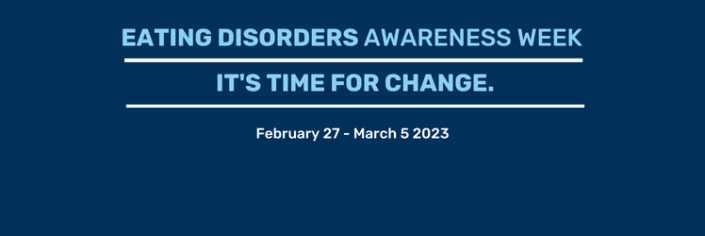The chance for recovery increases the earlier an eating disorder is detected. Therefore, it is important to be aware of some of the warning signs of an eating disorder.
An individual with an eating disorder generally won’t have all of these signs and symptoms at once, and warning signs and symptoms vary across eating disorders, so this isn’t intended as a checklist. Rather, it is intended as a general overview of the types of behaviors that may indicate an eating disorder. If you have any concerns about yourself or a loved one, please seek additional medical help.
Emotional and behavioral signs of an eating disorder
In general, behaviors and attitudes indicate that weight loss, dieting, and control of food are becoming primary concerns
- Dramatic weight loss
- Dresses in layers to hide weight loss or stay warm
- Is preoccupied with weight, food, calories, carbohydrates, fat grams, and dieting
- Refuses to eat certain foods, progressing to restrictions against whole categories of food (e.g., no carbohydrates, etc.)
- Makes frequent comments about feeling “fat” or overweight despite weight loss
- Complains of constipation, abdominal pain, cold intolerance, lethargy, and/or excess energy
- Denies feeling hungry
- Evidence of binge eating, including disappearance of large amounts of food in short periods of time or lots of empty wrappers and containers indicating consumption of large amounts of food
- Evidence of purging behaviors, including frequent trips to the bathroom after meals, signs and/or smells of vomiting, presence of wrappers or packages of laxatives or diuretics
- Appears uncomfortable eating around others
- Develops food rituals (e.g. eats only a particular food or food group [e.g. condiments], excessive chewing, doesn’t allow foods to touch)
- Skips meals or takes small portions of food at regular meals
- Disappears after eating, often to the bathroom
- Any new practice with food or fad diets, including cutting out entire food groups (no sugar, no carbs, no dairy, vegetarianism/veganism)
- Fear of eating in public or with others
- Steals or hoards food in strange places
- Drinks excessive amounts of water or non-caloric beverages
- Uses excessive amounts of mouthwash, mints, and gum
- Hides body with baggy clothes
- Maintains excessive, rigid exercise regimen — despite weather, fatigue, illness, or injury — due to the need to “burn off ” calories
- Shows unusual swelling of the cheeks or jaw area
- Has calluses on the back of the hands and knuckles from self- induced vomiting
- Teeth are discolored, stained
- Creates lifestyle schedules or rituals to make time for binge-and-purge sessions
- Withdraws from usual friends and activities
- Looks bloated from fluid retention
- Frequently diets
- Shows extreme concern with body weight and shape
- Frequent checking in the mirror for perceived flaws in appearance
- Has secret recurring episodes of binge eating (eating in a discrete period of time an amount of food that is much larger than most individuals would eat under similar circumstances); feels lack of control over ability to stop eating
- Purges after a binge (e.g. self-induced vomiting, abuse of laxatives, diet pills and/or diuretics, excessive exercise, fasting)
- Body weight is typically within the normal weight range; may be overweight
- Extreme mood swings
Physical signs of eating disorders
- Noticeable fluctuations in weight, both up and down
- Stomach cramps, other non-specific gastrointestinal complaints (constipation, acid reflux, etc.)
- Menstrual irregularities — missing periods or only having a period while on hormonal contraceptives (this is not considered a “true” period)
- Difficulties concentrating
- Abnormal laboratory findings (anemia, low thyroid and hormone levels, low potassium, low white and red blood cell counts)
- Dizziness, especially upon standing
- Fainting/syncope
- Feeling cold all the time
- Sleep problems
- Cuts and calluses across the top of finger joints (a result of inducing vomiting)
- Dental problems, such as enamel erosion, cavities, and tooth sensitivity
- Dry skin
- Dry and brittle nails
- Swelling around area of salivary glands
- Fine hair on body (lanugo)
- Thinning of hair on head, dry and brittle hair
- Cavities, or discoloration of teeth, from vomiting
- Muscle weakness
- Yellow skin (in context of eating large amounts of carrots)
- Cold, mottled hands and feet or swelling of feet
- Poor wound healing
- Impaired immune functioning
References:
Mitchell, J. E., & Crow, S. (2006). Medical complications of anorexia nervosa and bulimia nervosa. Current Opinion in Psychiatry, 19(4), 438-443.
To take a confidential online screening, visit www.nationaleatingdisorders.org/screening





